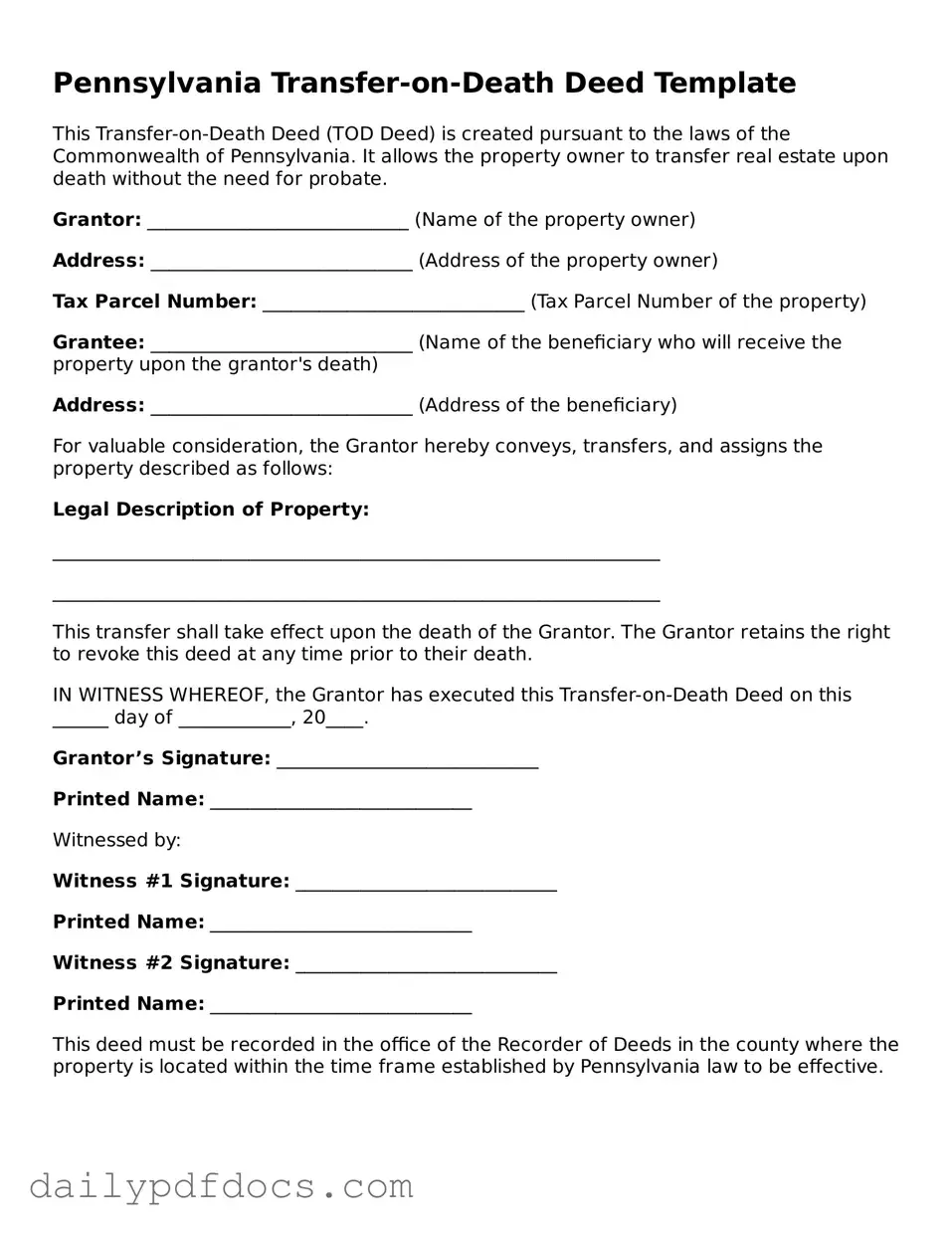Pennsylvania Transfer-on-Death Deed Template
This Transfer-on-Death Deed (TOD Deed) is created pursuant to the laws of the Commonwealth of Pennsylvania. It allows the property owner to transfer real estate upon death without the need for probate.
Grantor: ____________________________ (Name of the property owner)
Address: ____________________________ (Address of the property owner)
Tax Parcel Number: ____________________________ (Tax Parcel Number of the property)
Grantee: ____________________________ (Name of the beneficiary who will receive the property upon the grantor's death)
Address: ____________________________ (Address of the beneficiary)
For valuable consideration, the Grantor hereby conveys, transfers, and assigns the property described as follows:
Legal Description of Property:
_________________________________________________________________
_________________________________________________________________
This transfer shall take effect upon the death of the Grantor. The Grantor retains the right to revoke this deed at any time prior to their death.
IN WITNESS WHEREOF, the Grantor has executed this Transfer-on-Death Deed on this ______ day of ____________, 20____.
Grantor’s Signature: ____________________________
Printed Name: ____________________________
Witnessed by:
Witness #1 Signature: ____________________________
Printed Name: ____________________________
Witness #2 Signature: ____________________________
Printed Name: ____________________________
This deed must be recorded in the office of the Recorder of Deeds in the county where the property is located within the time frame established by Pennsylvania law to be effective.
